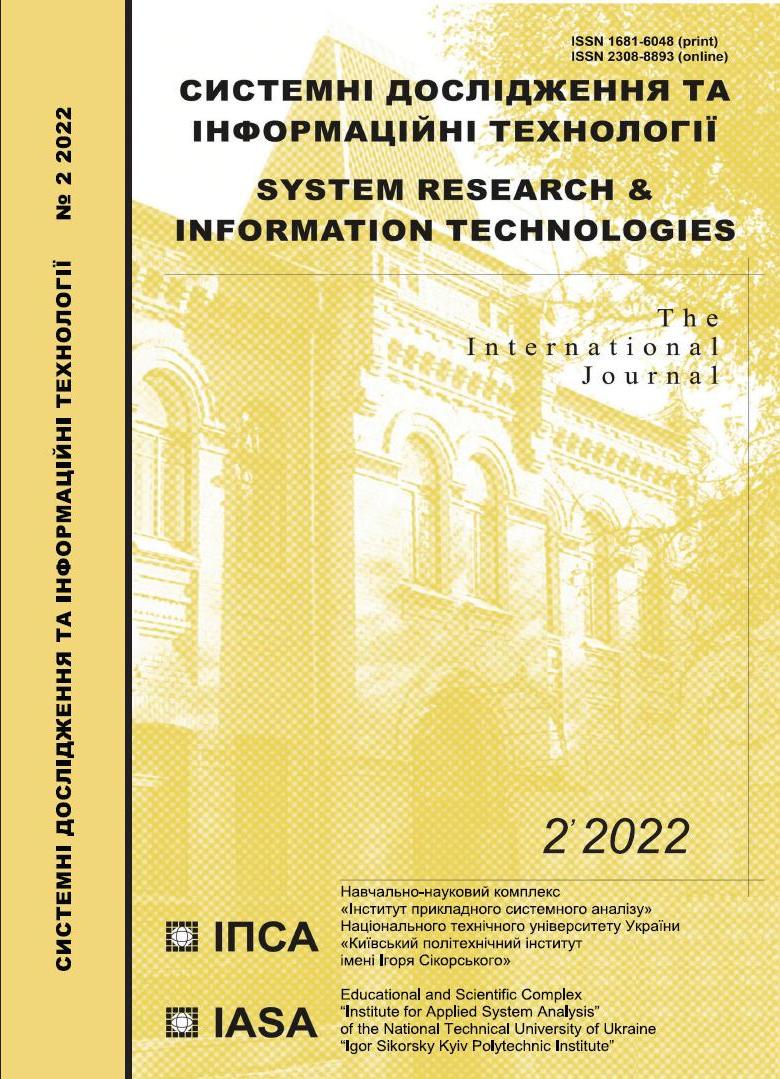Hybrid convolution network for medical images processing and breast cancer detection
DOI:
https://doi.org/10.20535/SRIT.2308-8893.2022.2.06Keywords:
breast cancer detection, hybrid convolutional network, encoder, classification sensitivity, dimensionality reductionAbstract
In this paper, the breast cancer detection problem using convolutional neural networks (CNN) is considered. The review of known works in this field is presented and analysed. Most of them rely only on feature extraction after the convolutions and use the precision of classification of malignant tumors as the main criterion. However, because of the huge number of parameters in the models, the time of computation is very large. A new structure of CNN is developed — a hybrid convolutional network consisting of convolutional encoder for features extraction and reduction of the complexity of the model and CNN for classification of tumors. As a result, it prevented overfitting the model and reduced training time. Further, while evaluating the performance of the convolutional model, it was suggested to consider recall and precision criteria instead of only accuracy like other works. The investigations of the suggested hybrid CNN were performed and compared with known results. After experiments, it was established the proposed hybrid convolutional network has shown high performance with sensitivity, precision, and accuracy of 93,50%, 91,60%, and 93%, respectively, and requires much less training time in the problem of breast cancer detection as compared with known works.
References
K. Polat et al., “A new classification method for breast cancer diagnosis: feature selection artificial immune recognition system (FS-AIRS)”, Advances in Natural Computation, pp. 830–838, 2005.
M.R. Senapati et al., “Local linear wavelet neural network for breast cancer recognition”, Neural Computing and Applications, 22 (1), pp. 125–131, 2013.
A. Marcano-Cedeno, J. Quintanilla Dominguez, and D. Andina, “Breast cancer classification applying the artificial metaplasticity algorithm”, Neurocomputing, 74 (8), pp. 1243–1250, 2011.
Diagnostic Mammogram. Available: https://www.nationalbreastcancer.org/ diagnosticmammogram.
Breast cancer: prevention and control. Available: https://www.who.int/news-room/ fact-sheets/ detail/breast-cancer.
Breast Cancer Histopathological Database (BreakHis). Available: https://web.inf. ufpr.br/vri/databases/breast-cancer-histopathological-database-breakhis/.
Inverse Relationship Between Precision and Recall. Available: https://datascience. stackexchange.com/questions/49117/inverserelationship-between-precision-and-recall
G. Arestaa et al., “BACH: grand challenge on breast cancer histology images”, Medical Image Analysis, ELSEVIER 2019.
BreakHist-Dataset-Image-Classification. Available: https://github.com/Anki0909/ BreakHist-Dataset-Image-Classification
Gao Huang, Zhuang Liu, and Kilian Q. Weinberger, “Densely Connected Convolutional Networks”, arXiv:1608.06993v3, 2018.
Majid Nawaz, Adel A. Sewissy, and Taysir Hassan A. Soliman, “MultiClass Breast Cancer Classification using Deep Learning Convolutional Neural Network”, International Journal of Advanced Computer Science and Applications, vol. 9, no. 6, 2018.
Yuexiang Li, Xinpeng Xie, Linlin Shen, and Shaoxiong Liu, “Reversed Active Learning based Atrous DenseNet for Pathological Image Classification”, arXiv:1807.02420, 2018.
A. Cruz-Roa et al., “Accurate and reproducible invasive breast cancer detection in whole-slide images: A Deep Learning approach for quantifying tumor extent”, Sci. Rep., 7, 46450, 2017. doi: 10.1038/srep46450.
Wenqing Sun, Tzu Liang (Bill) Tseng, Jianying Zhang, and Wei Qian (2016). “Enhancing deep convolutional neural network scheme for breast cancer diagnosis with unlabeled data”, Computerized Medical Imaging and Graphics. doi: 10.1016/j.compmedimag.2016.07.004
Comparison PCA and Autoencoder. Available: https://towardsdatascience.com/ dimensionality-reduction-pca-versus-autoencoders-338fcaf3297d
Y. Zaychenko and G. Hamidov, “Hybrid Fuzzy CNN Network in the Problem of Medical Images Classification and Diagnostics”, in Advances in Natural Computation, Fuzzy Systems and Knowledge Discovery, ICNC-FSKD 2019, Advances in Intelligent Systems and Computing, vol. 1074. Springer, Cham, 2020.
M. Naderan, Yu. Zaychenko, and A. Napoli, “Using convolutional neural networks for breast cancer diagnosing”, System Research and Information Technologies, no. 4, pp. 85–93, 2019.
M. Naderan, “Review methods for breast cancer detection using artificial intelligence and deep learning methods”, System Research & Information Technologies, no. 1, pp. 98–101, 2021.

